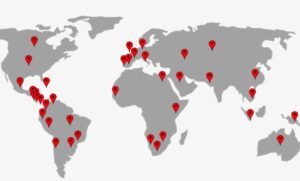OTOF-related auditory neuropathy spectrum disorder
G.A. Tavartkiladze1,2, M.R. Lalayants1,2, O.L. Shatokchina3, N.M. Galeeva3, T.G. Markova1,2, O.P.Ryzhkova3, A.V. Polyakov3,
1 National Research Centre for Audiology and Hearing Rehabilitation, Moscow, Russia, 117513
2 Russian Medical Academy of Continuing Professional Education, Moscow, Russia, 123995
3Research Centre for Medical Genetics, Moscow, Russia,115478
Abstract
Objective: Auditory neuropathy spectrum disorder (ANSD) is an electrophysiological label, that incorporates patients with hearing loss of different etiologies and pathogenesis, but united based on the presence of pre-neural cochlear responses such as otoacoustic emission (OAE) and cochlear microphonics (CM) and absent or grossly abnormal neural responses – auditory brain steam responses (ABRs) are usually absent. The ANSD etiology and pathophysiological mechanism of hearing loss predispose clinical features and cochlear implantation outcomes: patients with auditory synaptopathy have much better rehabilitation outcomes than patients with auditory neuropathy type of ANSD. The most common genetic cause of ANSD are OTOF gene mutations. Mutations in the OTOF gene encoding otoferlin result in a disrupted function of the ribbon synapses of inner hair cells, which predispose synaptopathy type of ANSD.
The aim of this study was to estimate the prevalence of OTOF mutations in Russian children with ANSD and evaluate electrophysiological and clinical features of OTOF-related ANSD.
Methods: 46 children with ANSD underwent two-step genetic testing: first step – GJB2 gene testing to exclude GJB2-related hearing loss; second step – Next Generation Sequencing (NGS) to explore another 30 hearing loss genes (including OTOF gene) and/or exome sequencing. Electrophysiological testing in this study, besides standard audiological tests, included registration of electrically evoked auditory brainstem responses (eABR) and intracochlear electrocochleography (ECoG), which were performed after cochlear implantation.
Results: NGS-testing revealed OTOF-related ANSD in 10 out of 46 tested cases (22%). All 10 children with the OTOF-related ANSD passed hearing screening. OAE were present till the last testing at the age of 12 years in the oldest child. ABR were not detectable at 100 dB nHL, ASSR were measurable bilaterally at all frequencies in all cases, but they did not correlate with behavioral thresholds indicating severe hearing loss. After cochlear implantation auditory nerve action potentials to electric stimulation were detected within normal range, and eABRs were recordable in all 5 tested cases of OTOF-related ANSD. Clear CMs in OTOF-related ANSD were obtained at all tested frequencies during intracochlear ECoG.
Summary: Genetic testing of children with ANSD, first of all OTOF testing, enables to reveal hearing loss etiology at least in 22% of cases. and provide the optimal rehabilitation approach, including cochlear implantation, as early as possible. Electrophysiological testing (especially eABR) support pathophysiological mechanism of OTOF-related ANSD (synaptopathy) and enables to predict good rehabilitation outcomes after cochlear implantation.
Keywords: auditory neuropathy spectrum disorder, OTOF, eABR, electrocochleography



